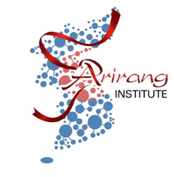It is definitely interesting times on the Korean peninsula. The Korea Joongang Daily reports:
“The South Korea-U.S. alliance is at a crossroads. Ahead of their third negotiation for defense cost-sharing and with the deadline for extending South Korea’s General Security of Military Information Agreement (Gsomia) with Japan fast approaching on Nov. 22, three high-level U.S. officials handling Korean Peninsula issues visited Seoul together. They included James DeHart, chief negotiator for defense cost-sharing with foreign partners, David Stilwell, assistant secretary of state for the Bureau of East Asian and Pacific Affairs, and Keith Krach, under secretary of state for economic growth, energy security and the environment.”
The majority of the defense costs will likely be used in the construction, maintenance, and operation of Camp Humphreys, located in Pyeongtaek, South Korea.
The Army Times reports:
At nearly $11 billion, Camp Humphreys is the largest construction project in U.S. Defense Department history, most of it paid for by the South Koreans. Soldiers on the Korean Peninsula are in the final stages of a relocation plan that consolidates U.S. forces at a new hub south of Seoul, in an area North Korea appears to have labeled a “fat target" for its new weapons.
GSOMIA, Defense-cost sharing, THAAD, South Korea’s “three no agreement” with China all make for hot topics of debate at this crucial juncture in the US-ROK alliance. Interestingly, in relation to Pyeongtaek, South Korea there is one significant ‘situation’ that is not being discussed in the news: China’s new castle in Pyeongtaek city.
First reported in 2016, the South Korean government agreed to the creation of “China Castle” in downtown Pyeongtaek, South Korea.
Source: China Castle Website - http://www.chinacastle.or.kr/
Source: China Castle Website - http://www.chinacastle.or.kr/
So what is “China Castle”? Yonhap News reported in May of 2016:
South Korea will build a new Chinatown near Seoul to serve as an international shopping and tourism hub, the operator of a free economic zone said Wednesday. The Chinatown, expected to be over 2.3 million square meters in size, will be built in Pyeongtaek, some 70 kilometers southeast of Seoul, according to the Yellow Sea Free Economic Zone (YSFEZ) authority. By attracting experts and students interested in South Korea and China, the company aims to make the region appeal to Chinese tourists, as well as service and distribution industries.
The location of “China Castle” is minutes away from Camp Humphreys. “China Castle” represents a security nightmare for the US-ROK alliance. As previously reported, Chinese long-term residents in South Korea (a little over 1 million people) represent a new economic and political force in South Korean politics. These interests are often pro-China and against the US-ROK alliance. Although Chinese long-term residents cannot vote for National Assembly members and the President of South Korea, they are allowed to vote on the local level, which includes the city level.
With a population increase of long-term Chinese residents in Pyeongtaek, South Korea security experts at Camp Humphreys will definitely have their hands full. How many anti-U.S. military protests can we expect to see outside the gates of Camp Humphreys in the near future? How many provocations and incidents with US and ROK personnel can we expect in the future? With millions of tourists headed for Camp Humphreys every year, how difficult would it be for Communist China to organize a sea of humanity and claim it to be a ‘Candlelight’ protest? Furthermore, if ‘China Castle’ only exists because of Camp Humphreys, then perhaps the profits gained from all of the shopping and tourism at ‘China Castle’ should be included in the defense-cost negotiations? It’s just a thought. Until next time.




